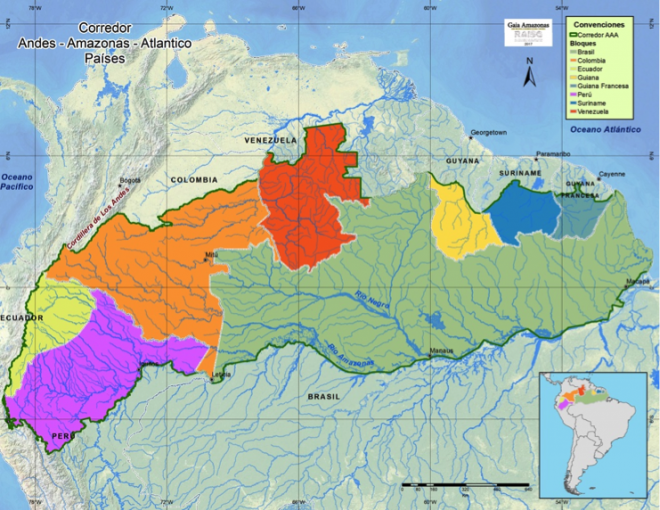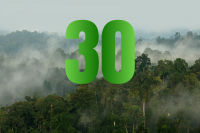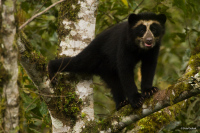As Gaia Amazonas' long-term project partners, Rainforest Concern provided initial funding for the AAA corridor project. Our ongoing support is being used to implement an advocacy campaign that is mobilising support for the corridor.
The world’s largest ecological corridor
The AAA corridor project is an initiative built from Gaia Amazonas' collaboration with Colombian indigenous communities and NGOs. Spanning a potential 135 million hectares (521,240 sq. miles) of rainforest, it is set to become the world's largest ecological corridor.
The proposed area includes the Amazon of Colombia, Brazil, Ecuador, Peru, French Guyana, Guyana, Surinam and Venezuela with an approximate area of 265 million hectares. Approximately 65% of the area (173 million hectares) is made up of 222 Protected Natural Areas and 2,003 Indigenous Territories that connect the Amazon with the ecosystems of the Andes and the Atlantic Ocean.
In addition to the Natural Protected Areas and Indigenous Territories, the AAA Corridor also includes areas without specific protection measures and around 440 rural and urban centers, of which Iquitos, Leticia, Manaus stand out. These three represent important challenges around the creation of sustainable development models to maintain the connectivity and the integral welfare of its populations.
The governments, civil society and indigenous peoples of the nine countries that share the Amazon basin would be part of the corridor that suggests eight geographic blocks as follows:
1. The Colombian Amazon region
2. The states of Amazonas and Bolívar in Venezuela;
3. The northern region of the Amazon River in Brazil (States of Amazonas, Roraima, Amapá and Pará);
4. The Amazon region of Ecuador;
5. The northern region of the Marañón River in Perú;
6. The Amazon region in Guyana;
7. The Amazon region of Suriname
8. The Amazon region in French Guyana
After three decades of joint work with the indigenous peoples of the Northern Amazon, the AAA corridor opens the way to consolidate projects, policies and conservation models in favor of the integrity of this region. This is the result of a vision built thanks to the active participation of indigenous peoples, governments and civil society organizations.
Undoubtedly, this is a historic commitment and its implementation requires the dialogue of knowledges between local, regional, national and international stakeholders to achieve more peaceful, just and inclusive societies.
Original article on Gaia Amazonas website.



